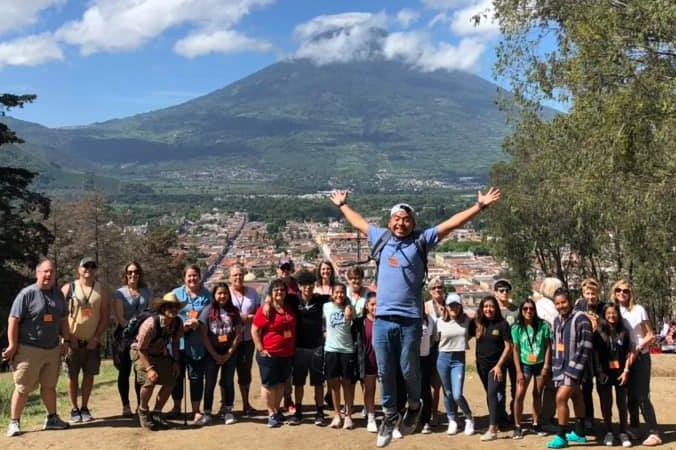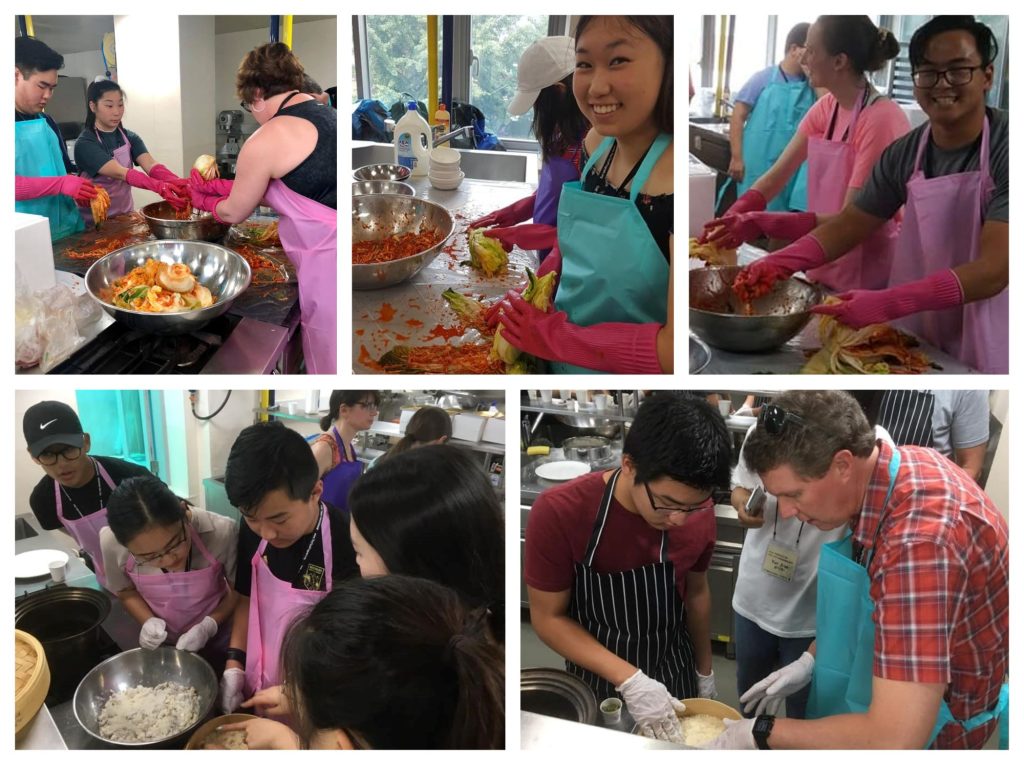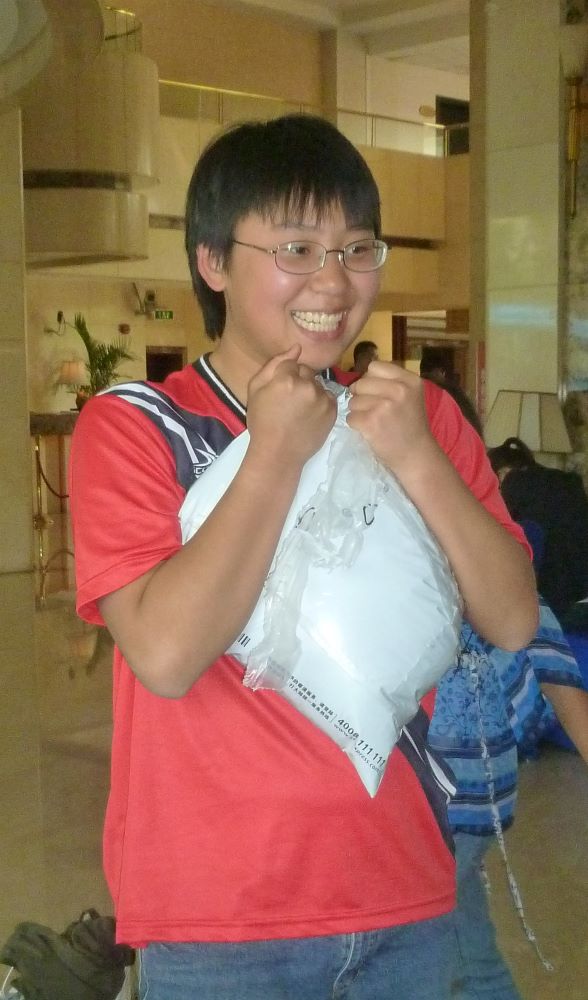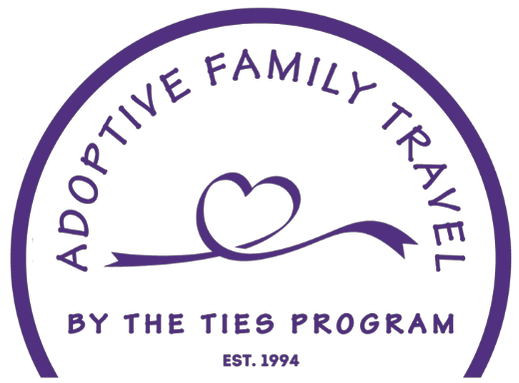For more than 30 years, adoptees and their families have been setting off on global adventures with the goal of learning more about their birth countries, and ultimately themselves. At the heart of every journey, adoptees are making unique and important connections as they strive to answer, “Who am I?”
You might be inclined to think the only important connections involve meeting birth family. It is true that more international adoptees are meeting birth family than most of us ever imagined possible. However, the points of connection helping adoptees get comfortable in their skin are much more varied and vital to understanding the impact of a heritage journey.
The People We Travel With
There is really no way to overstate the importance of adoptees traveling with other adoptees and their families.
Bonnie MacAdam shared, “The healthiest outcome of the trip for my daughter is that going with a group normalized her situation and her adoption.” A Kazakhstan Ties adoptee described the shift in thinking like this: “Seeing how happy, warm, fun and just normal all the families were was so important. The kids like me were Americans, but also Kazakh. White parents with Kazakh children. We’re a normal family. Whew!”

The connection among the adoptees traveling grows stronger day by day. “We arrived as strangers and left as family,” says Nicholos Brunson, 15. So, what’s the magic that makes this happen? First, for many of the adoptees, it is the first time in their lives where there is no need to explain their family makeup and who they “really” are. The other adoptees simply get it. Some participants have been to culture and/or adoption camp, giving them a leg up on this liberating phenomenon. Campers say this aha moment feels more like, “Oh yeah, back to this comfortable space again.” One of many great reasons for attending camp.
Creating a comfortable safe space is key to helping adoptees engage and connect further. Together, adoptees visiting their birth country sightsee, learn about culture, explore adoption issues, and have oodles of fun. But many of the things they do come with a twist.
Picture this: adoptees in Korea learning how to make kimchee, or in Guatemala learning how to clap a tortilla into a round, flat patty. Sounds fun, right? But here’s the thing—food (whether eating it or making it) is intricately reflective of cultural understanding. It takes a lot of courage for teens, tweens and young adults to show interest in something, especially something that communicates “I don’t know the basics of the culture I was born into, but I want to learn.” It would be like a teenager from the U.S. who had never eaten a hamburger, or learned how to make one. Think of the emotions around not knowing. Now, imagine the pride of understanding and mastery.

On Ties trips adoptees can choose to take part in Connect & Chat gatherings where they have an opportunity to further connections, have fun, and to the degree they are interested can begin to process their birth country experience in real time. They also have lots of ongoing conversation. “During the trip, I met other kids who were dealing with the same identity issues I was,” reflects Anisha Pitzenberger, who was 17 when she traveled. “All of a sudden, I realized I was not alone. Talking with the kids I had so much in common with gave me a whole new insight into who I was.”
The People We Meet
The people adoptees encounter in their birth country create connection unlike any other component of the journey. When they can be located, adoptees’ first caregivers tend to be high impact connections. In India, caregivers are called massis. Many years ago, International Mission of Hope in Calcutta closed, and many of the massis relocated to Sabera’s school for girls. With Ian Forber-Pratt leading the India Ties group, Jackson Walker, 18, visited Sabera. The massis were all gathered when Ian began to share the Indian names of the adoptees present. As he said Jackson’s Indian name there was a stir among the women. A massi grabbed his arm, and said “You are mine, even mine, even after 18 years!” She pulled his cheeks (really she did), and Jackson thought, “I found the piece of India I came looking for. And it is mine.”
Jennie Mullen, 14, met her foster father in China. He hugged her and burst into tears. Jennie cried too, feeling both overwhelmed and happy. Her foster father held her hand the entire time they were together. “Are you typically a hand holder?” I was compelled to ask. “No, not at all,” she said. “But, I wanted him to keep holding my hand,” she added sweetly, as she recounted the significance of the connection.

Some people adoptees meet in their birth country have been part of their life story from the beginning. Mrs. Thuy, the proprietor of the now-closed Claudia Hotel in Hanoi, is one such person. Parents frequently stayed at the Claudia when they adopted, and it’s safe to say all families who stayed with Mrs. Thuy would love their kids to meet her. When they do, Mrs. Thuy showers them with love. In doing so, the adoptee becomes actively involved in their own story, a powerful point of connection.
People of importance can be, and often are, somewhat more casually encountered.
Jennie Mullen thought back on a day when it rained so hard she and her parents were stuck along the side of a road for two hours while streets swelled with water. “People who lived in the area were walking around, still doing their errands, carrying baskets of food, some walking their bikes.” Jennie remembers it as a high impact day for her, feeling especially connected to the everyday people with whom she shares her heritage.
Eleanor Chin, 16, made an unexpected connection in China. While there, she interacted with lots of school kids, all wearing uniforms. Eleanor didn’t resist the message her heart was giving her. “A desire to have my own uniform kindled inside me,” Eleanor remembers. So, the next day she and her dad went on a mission to purchase one. “You can only get those in schools” a store owner advised her.

To her surprise, the store owner went on to say, “My daughter graduated. You can have her uniform.” Even more surprisingly, the store owner offered to have it mailed to Eleanor’s next hotel! Can you imagine the power of this stranger’s kindness? Long story short, Eleanor now has her very own Chinese school uniform. “My happiness in that moment was unsurpassed,” Eleanor told me. “The experience contributed greatly to me as a Chinese girl –I’ve always known I was adopted from China but I feel more connected to those roots now.”
The Family We Meet
Birth family meetings of staggering importance are happening in many countries.
Luke Ferriby remembers always knowing he would have the opportunity to travel to Korea when he was 18. His parents, supportive of a search, sent letters and pictures to the social service agency every year on his birthday. When the year came for them to travel, word came back from Korea. His birth mother would not meet. Such hard news.
But then, something else came to light. His birth mother had never received the letters or pictures. What happened next is mind boggling. All 18 letters were translated and sent to Luke’s birthmother along with the pictures. All in one day, she poured through year after year of his life, and learned about the family he had grown up in. What initially seemed impossible was going to happen. She agreed to meet Luke.
They met at the social service agency, went to lunch, then to Starbucks for green tea smoothies. It became apparent that their time together was coming to a close, no one knowing if they would ever have another opportunity. “I had stuff I had to say,” Luke told me. “At 13 or 14, I realized I had things I wanted to say to her.” And so, with the end nearing, Luke stood. This is what he said: “Please don’t think I am mad at you. I am healthy. I have a good family. Please don’t worry anymore.” Luke said what was on his heart, having made the connection he needed to make.
It is also important to recognize that meeting birth family is not the goal for all adoptees.
Jessica Lackner was 17 when she traveled to Vietnam. While meeting her birth mother had many made-for-Hollywood moments, and Jessica is glad to have met her, she was clear, “Meeting my birth family was not the biggest part of the trip.” She went on to explain. “I really wanted to see where I came from. When I arrived in CanTho, I felt closer to what I had come for than anywhere else.” She saw the hotel where her mom and grandmother stayed when they traveled to bring her home. She saw how people in the area live out their lives surrounded by the waters of the Mekong Delta. She shopped in the shopping mall that sits on the site of what once was the hospital where she was born. Those were the connections she felt filled her. “If I had not met my birth mother, that would have been ok,” she told me.
Final Thoughts
Over time, I’ve come to appreciate that while meeting birth family is intensely important for many adoptees, it is not true for all. What each adopted person needs to feel complete is as unique as the individual. At the heart of the journey there are countless possibilities for connection. We simply need to create safe spaces and honor the time necessary for making them.
Becca Piper is the founder and former co-director of Adoptive Family Travel by The Ties Program.
